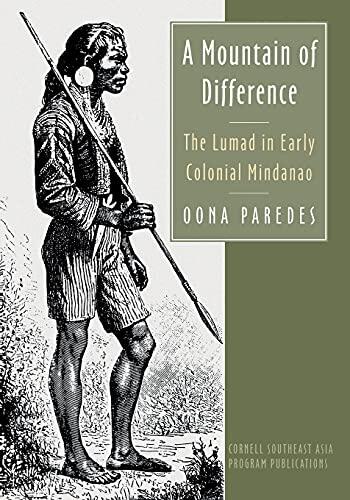
A Mountain of Difference: The Lumad in Early Colonial Mindanao
przez
Oona Paredes
Brak ocen
History
Health & Wellness
Format
Miękka okładka
Strony
208
Język
Angielski
Opublikowany
Jun 15, 2013
Wydawca
Southeast Asia Program Publications
Wydanie
1
ISBN-10
0877277613
ISBN-13
9780877277613
Opis
Set against the lush backdrop of early colonial Mindanao, this detailed exploration offers a profound insight into the lives of the Lumad, the indigenous peoples shaped by the intertwining forces of culture, colonization, and resistance. Oona Paredes delves into historical narratives that have often been overlooked, illuminating how these communities navigated the complexities of colonial encounters.
Through meticulous research, the author paints a vivid picture of the Lumad's social structures, belief systems, and resilient spirit. She examines the intricate relationships they developed with their environment and how these ties influenced their responses to external pressures. The narrative unveils the struggles faced by the Lumad, as they resisted the encroachment of foreign powers while striving to maintain their identity and autonomy.
Paredes’ work is marked by a rich historical context that highlights the significant events and phenomena influencing the experience of the Lumad during this transformative period. The insights provided challenge prevailing narratives, offering a more nuanced understanding of the impact of colonialism on indigenous populations.
As readers journey through these pages, they are invited to reflect on themes of identity, resilience, and the enduring connection between people and land. This compelling study not only contributes to the field of Southeast Asian studies but also emphasizes the importance of recognizing and amplifying indigenous voices in historical discourse.
Through meticulous research, the author paints a vivid picture of the Lumad's social structures, belief systems, and resilient spirit. She examines the intricate relationships they developed with their environment and how these ties influenced their responses to external pressures. The narrative unveils the struggles faced by the Lumad, as they resisted the encroachment of foreign powers while striving to maintain their identity and autonomy.
Paredes’ work is marked by a rich historical context that highlights the significant events and phenomena influencing the experience of the Lumad during this transformative period. The insights provided challenge prevailing narratives, offering a more nuanced understanding of the impact of colonialism on indigenous populations.
As readers journey through these pages, they are invited to reflect on themes of identity, resilience, and the enduring connection between people and land. This compelling study not only contributes to the field of Southeast Asian studies but also emphasizes the importance of recognizing and amplifying indigenous voices in historical discourse.
Recenzje
Nie ma jeszcze recenzji
Bądź pierwszy, aby zrecenzować tę książkę i podziel się swoimi przemyśleniami
Dodaj pierwszą recenzjęDziennik czytania
Nie znaleziono dzienników czytania
Zacznij śledzić swój postęp w czytaniu, aby zobaczyć logi tutaj
Dodaj swój pierwszy dziennik czytaniaNotatki
Dziennik transakcji
Nie znaleziono dzienników transakcji
Zacznij śledzić swoje transakcje książkowe, aby zobaczyć logi tutaj
Dodaj swój pierwszy dziennik transakcji